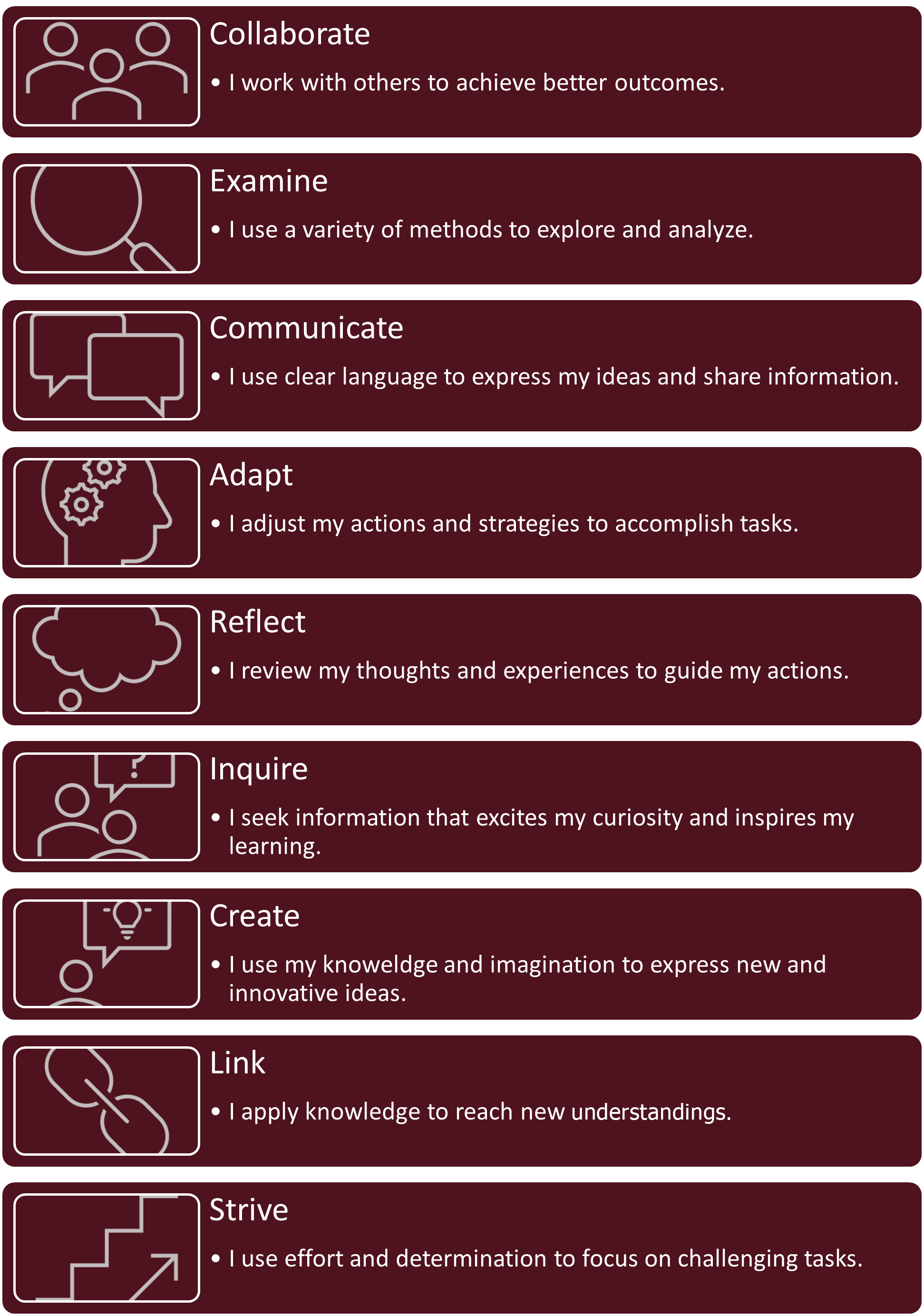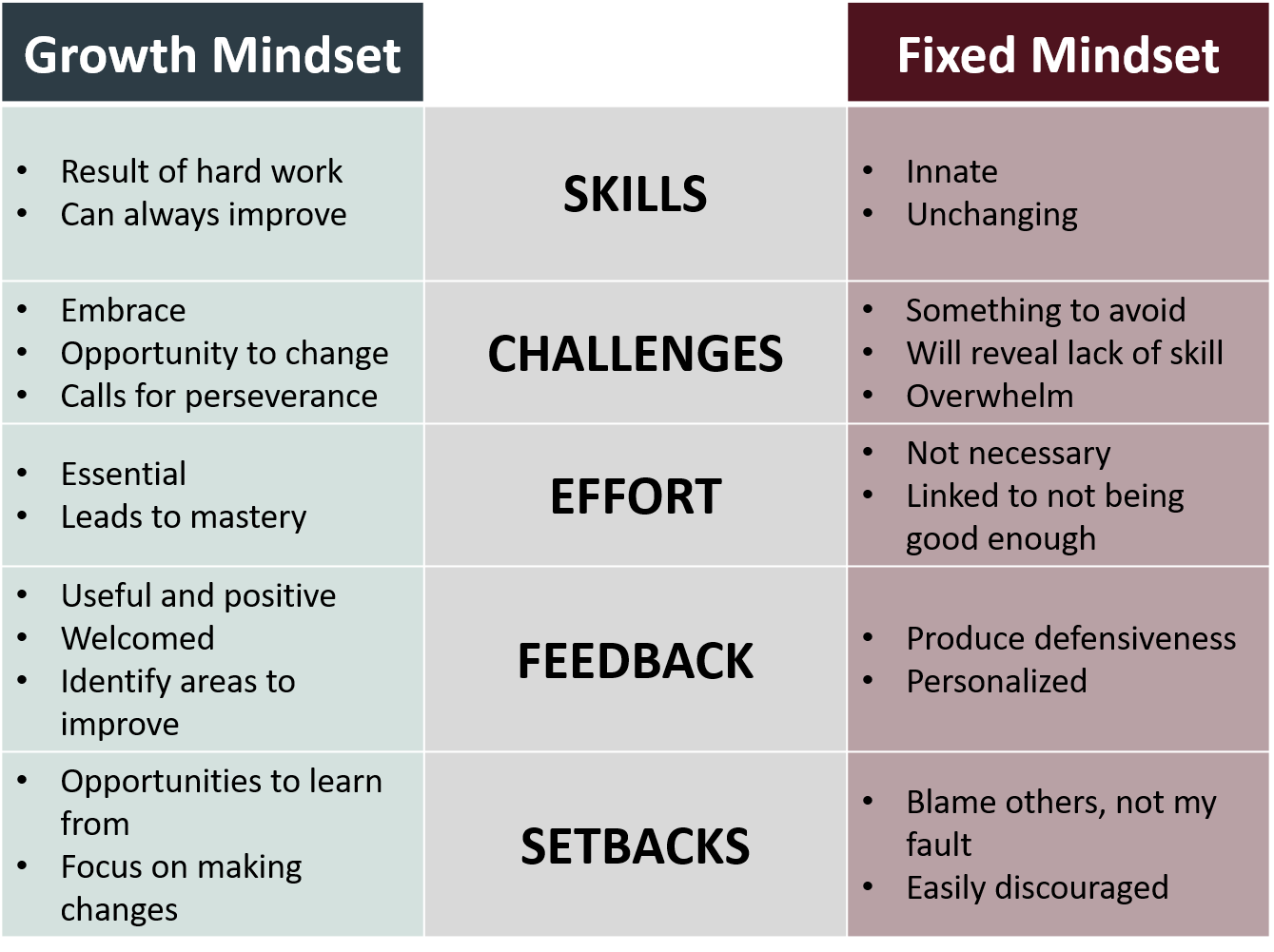28 Critical Thinking
Critical Thinking
Critical thinking includes your ability to analyze, interpret, and reflect on the world. Critical thinking skills include the ability to:
- Understand the links between ideas
- Determine the importance and relevance of arguments and ideas
- Recognize, build, and appraise different points of view
- Identify inconsistencies and errors in reasoning
- Approach problems in a consistent and systematic way
- Reflect on our own assumptions, beliefs, and values (Skills You Need, 2021).
Watch the following video on 5 tips to improve your critical thinking:

Answer a Problem with Critical Thinking
Critical thinking is something you do, not something you have. To develop this skill, you will need to start by thinking about your method or approach to decision making.
Figure 6.5 outlines one path of steps that indicate critical thinking. Imagine these as the thoughtful actions that led to your decision. First, identify the problem or question, being as specific as possible about what you are asking. Next, gather and organize the information. Find several sources that present a variety of perspectives to ensure you avoid bias. Then, analyze the data and sources to ensure credibility and reliability. This is another spot to be aware of your biases. Look for the data that is most relevant to the question you are trying to answer. Determine if you have enough information to make an informed decision, and if not, go back to the information gathering step. When you are ready, make your decision based on the evidence and information. Finish by communicating your decision to the stakeholders (Indeed, 2021).

How to Improve Your Critical Thinking Skills
The following are some ways to improve critical thinking:.
- Become more self-aware. This includes considering your thought process, values, morals, ethics, and other beliefs, as well as thinking objectively about your personal preferences. Know your strengths, weaknesses, and biases, as these will help you better understand your perspective.
- Develop foresight. Think about the possible outcomes and what positive and negative changes might occur. Knowing this will help you predict the actions and reactions of making a choice.
- Practice active listening. Active listening and practicing empathy are key to understanding others’ perspectives. It is important to gain a full understanding of what others’ needs, wants, and expectations are.
- Ask clarifying questions. Never assume or guess, confirm what you think you know. It is better for others to have to repeat or for you to rephrase points to ensure correctness. Another key point is to ensure whether something is “a fact, an opinion, or an idea” (Indeed, 2021).
- Evaluate the existing evidence. Rely on your “previous experiences and [the] facts [you have] to help make your current decision” (Indeed, 2021). Organize the information you have and consider the source of that information.
Continuous Learning
Did you notice that in all of the “how to improve” lists, you are always encouraged to learn more? That is intentional! The most important thing about essential skills is that they are skills that you can continue to improve. Employers value employees who are willing to learn and take on more responsibility. Continuous learning is a skill that will pay dividends in a long-term, beneficial relationship with your employer.
Continuous learning is also commonly known as constant learning or lifelong learning. You already know two important components of continuous learning from Reflective Practice in WIL.
Remember that a growth mindset is about embracing the unknown, including criticism and challenges. You need to find strength and determination in even the most challenging situations. Imagine the possibilities that open up to solve a problem when you change your thinking from “well, I guess that won’t work” to “what else could work to solve this”. You demonstrate a growth mindset when you celebrate and learn from your peers’ and colleagues’ successes, put forth efforts to pursue new learning. Have a look at the information below to explore how your mindset can shape your behaviour.

Continuous learning is about you wanting to increase your knowledge, expand your skills, and take on challenges when they come up. It is said that continuous learning is strongly linked to adaptability. There will be shifts and changes in your various jobs and work environments, so adapting a continuous learner attitude will motivate you to embrace the changes and the learning involved that come along with that change.
How to Improve Your Continuous Learning Skills
- Set a goal. Use your goals to determine what you want to learn and when.
- Plan to learn. Set aside time each week, month, and year to learn new things. If it is part of your routine, making learning continuous is easier to accomplish.
- See learning as a motivator. You are investing in yourself when you prioritize taking classes, researching online, and watching videos or tutorials.
- Feed your passions. Take time to learn things that interest you, and they might energize you when it is time to focus on learning tasks that you find less interesting.
Key Takeaways
- Practice reading for different purposes by skimming, using document design, and understanding the conventions of the documents at your workplace.
- Fear of public speaking is common, but there are lots of things you can do to build your confidence and get comfortable sharing your ideas.
- Apply critical thinking to your internet searches to better evaluate your sources and come up with stronger solutions for your employer.
- Never stop learning! All essential skills can be improved with patience, practice, and dedicated learning time.
Image Descriptions
Figure 6.4 Nine traits of critical thinking.
Collaborate – I work with others to achieve better outcomes.
Examine – I used a variety of methods to explore and analyze
Communicate – I use clear language to express my idea and share information
Adapt – I adjust my actions and strategies to accomplish tasks.
Reflect – I review my thoughts and experiences to guide my actions.
Inquire – I seek information that excites my curiosity and inspires my learning.
Create – I use my knowledge and imagination to express new and innovative ideas.
Link – I apply knowledge to reach new understandings.
Strive – I use effort and determination to focus on challenging tasks.
Figure 6.5 Steps in critical thinking
- Identify the problem or question
- Gather and organize information
- Analyze the data and sources
- Determine the significance of the data
- Make a decision
- Communicate your conclusion
Figure 6.6 Growth mindset versus fixed mindset
| blank | Growth Mindset | Fixed Mindset |
|---|---|---|
| Skills |
|
|
| Challenges |
|
|
| Efforts |
|
|
| Feedback |
|
|
| Setbacks |
|
|
Media Attributions
- “Figure 6.4 Nine traits of critical thinking” by Deb Nielsen, Emily Ballantyne, Faatimah Murad and Melissa Fournier is licensed under a CC BY-NC 4.0 licence. Based on Love, 2017.
- “Figure 6.5 Steps in critical thinking” by Deb Nielsen, Emily Ballantyne, Faatimah Murad and Melissa Fournier is licensed under a CC BY-NC 4.0 licence. Based on Indeed, 2021.
- “Figure 6.6 Growth mindset versus fixed mindset” by Deb Nielsen, Emily Ballantyne, Faatimah Murad and Melissa Fournier, adapted from ClipArt Max, n.d. is licensed under a CC BY-NC 4.0 licence.
References
ClipArt Max. (n.d.). Growth vs. fixed mindset: Approaching a challenge with a growth mindset. ClipArt Max. https://www.clipartmax.com/middle/m2i8b1b1Z5K9A0Z5_growth-vs-fixed-mindset-approaching-a-challenge-with-a-growth-mindset/
Indeed. (2021). 6 ways to improve critical thinking at work. Indeed. https://www.indeed.com/career-advice/career-development/how-to-improve-critical-thinking
Love, S. (2017). 9 traits of critical thinking. Mentoring Minds. https://www.mentoringminds.com/learn/blog/9-traits-of-critical-thinking/

